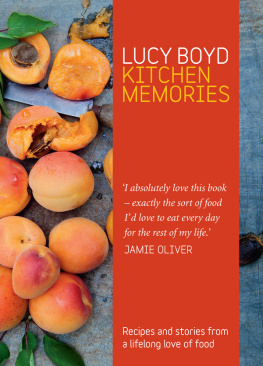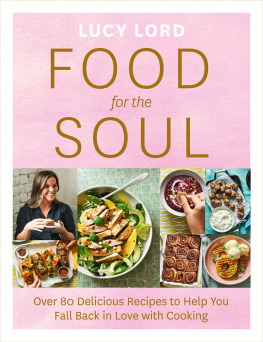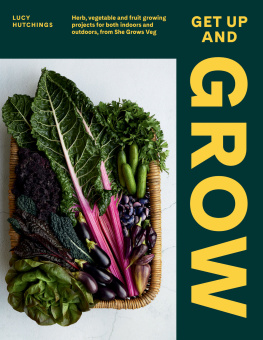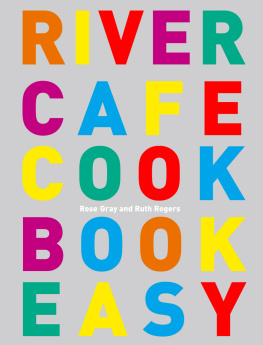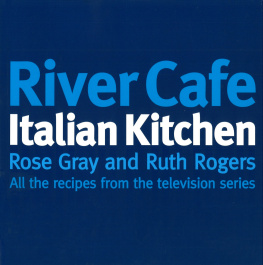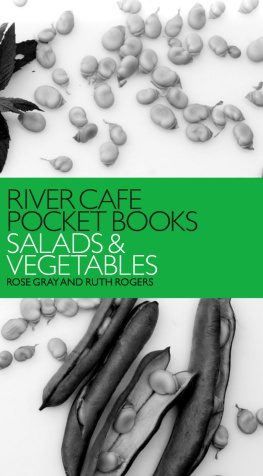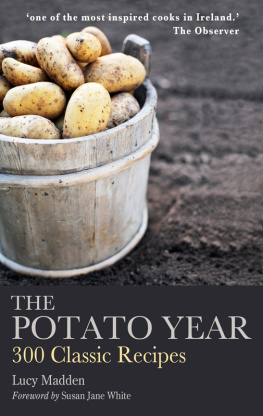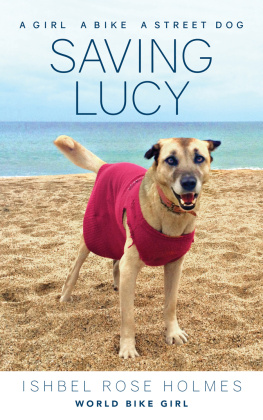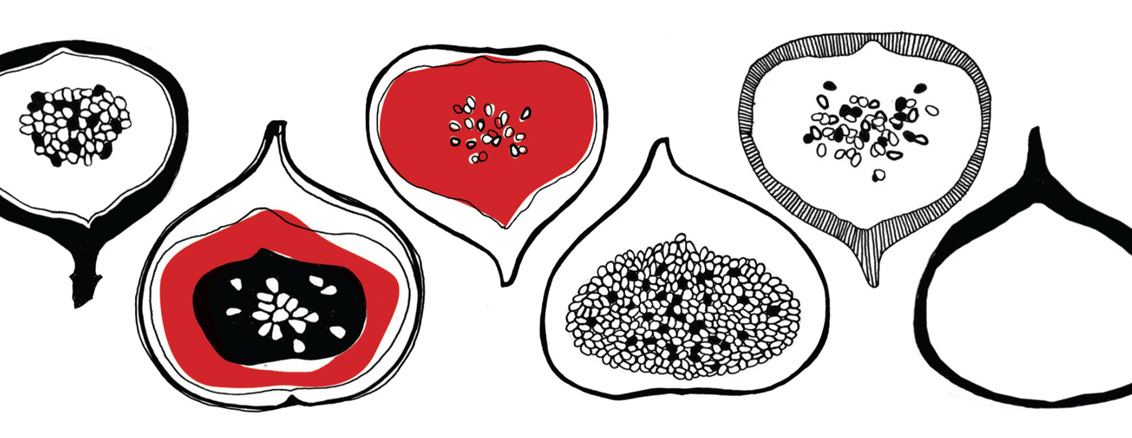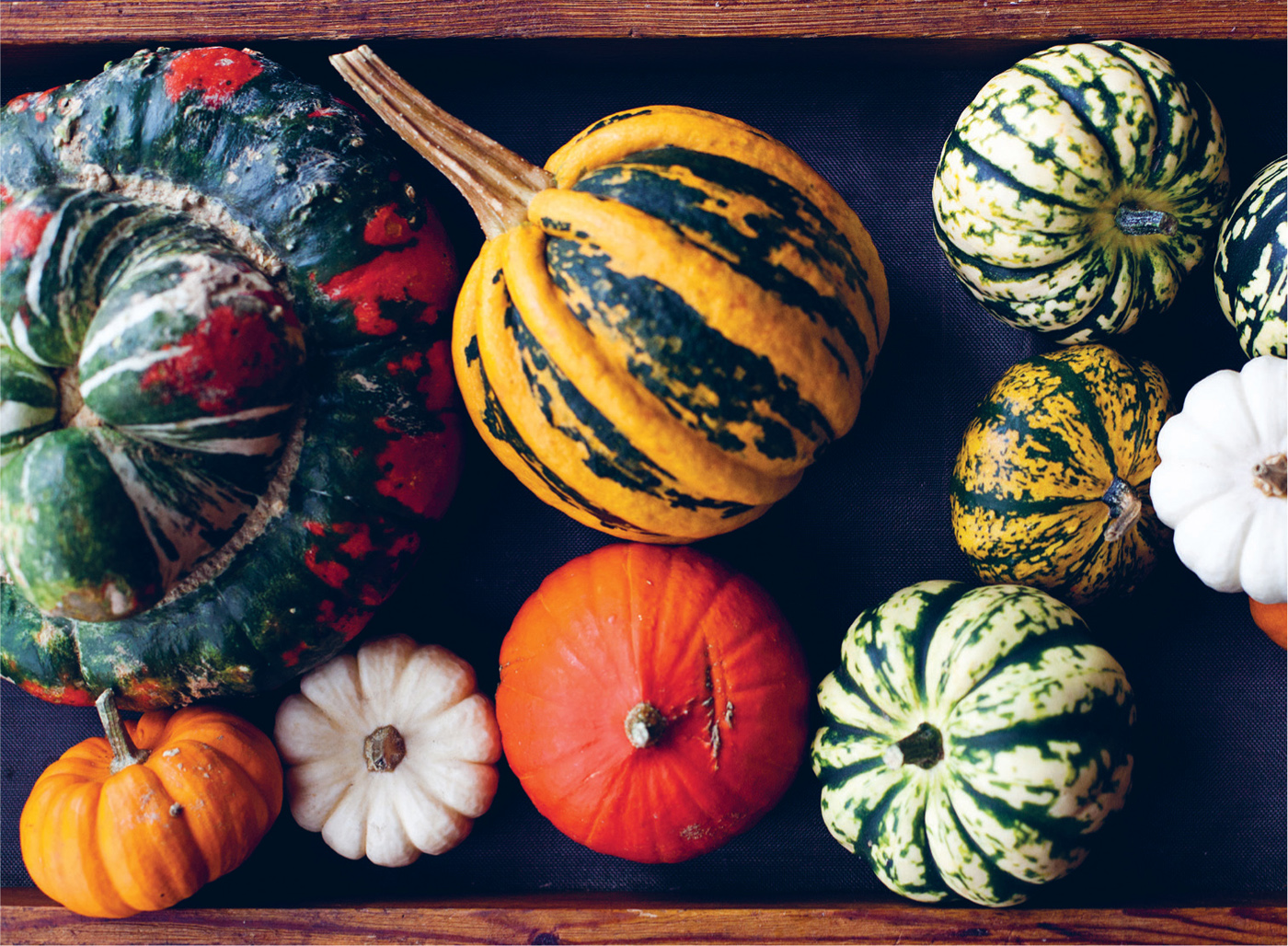ACKNOWLEDGMENTS
I would like to thank all my family and friends for their contributions, recipes, encouragement and support, particularly: Gael and Francesco Boglione, Phoebe Manley, Rosie Bines, Nigel Pullan, Su Miller, Skye Gyngell, Ross Barr, Adam Alvarez, Rob Howe, Tor Edwards, Ossie Gray, Janey Manley, Dan Pullan, Svett Karovski, Kingsley Paine, Sylvie Franquet, Simon Hopkinson, Lima Bines, Tom Broom, Joseph Trivelli, Sian Wyn Owen, David Gleave, Sarah Canet, Dante MacIlwaine Gray. And especially: Hester Gray, David MacIlwaine, Ruthie Rogers and to Charles Pullan and my daughters Daisy Boyd, Alex and Mia Pullan and, of course, I couldnt have written this book without my mum a pinch of Rose is in every recipe.
I would also like to thank H G Walter ( www.hgwalter.com ) for providing me with outstanding meat and game, Andreas Georghiou ( www.andreasveg.co.uk ) for incredible English, Italian and French fruit and vegetables, and Brindisa ( www.brindisa.com ) for sending me the best anchovies.
I am hugely grateful to all the team at Harper Collins for the work they have put into the creation of my book: Carole Tonkinson, Helen Wedgewood and Caroline March, as well as Laura Edwards, Linda Tubby, Roisin Nield, Myfanwy Vernon-Hunt, Lucy Sykes-Thompson and Barbara Dixon.
Australia
HarperCollins Publishers (Australia) Pty. Ltd.
Level 13, 201 Elizabeth Street
Sydney, NSW 2000, Australia
http://www.harpercollins.com.au/ebooks
Canada
HarperCollins Canada
2 Bloor Street East - 20th Floor
Toronto, ON, M4W, 1A8, Canada
http://www.harpercollins.ca
New Zealand
HarperCollins Publishers (New Zealand) Limited
P.O. Box 1
Auckland, New Zealand
http://www.harpercollins.co.nz
United Kingdom
HarperCollins Publishers Ltd.
77-85 Fulham Palace Road
London, W6 8JB, UK
http://www.harpercollins.co.uk
United States
HarperCollins Publishers Inc.
10 East 53rd Street
New York, NY 10022
http://www.harpercollins.com
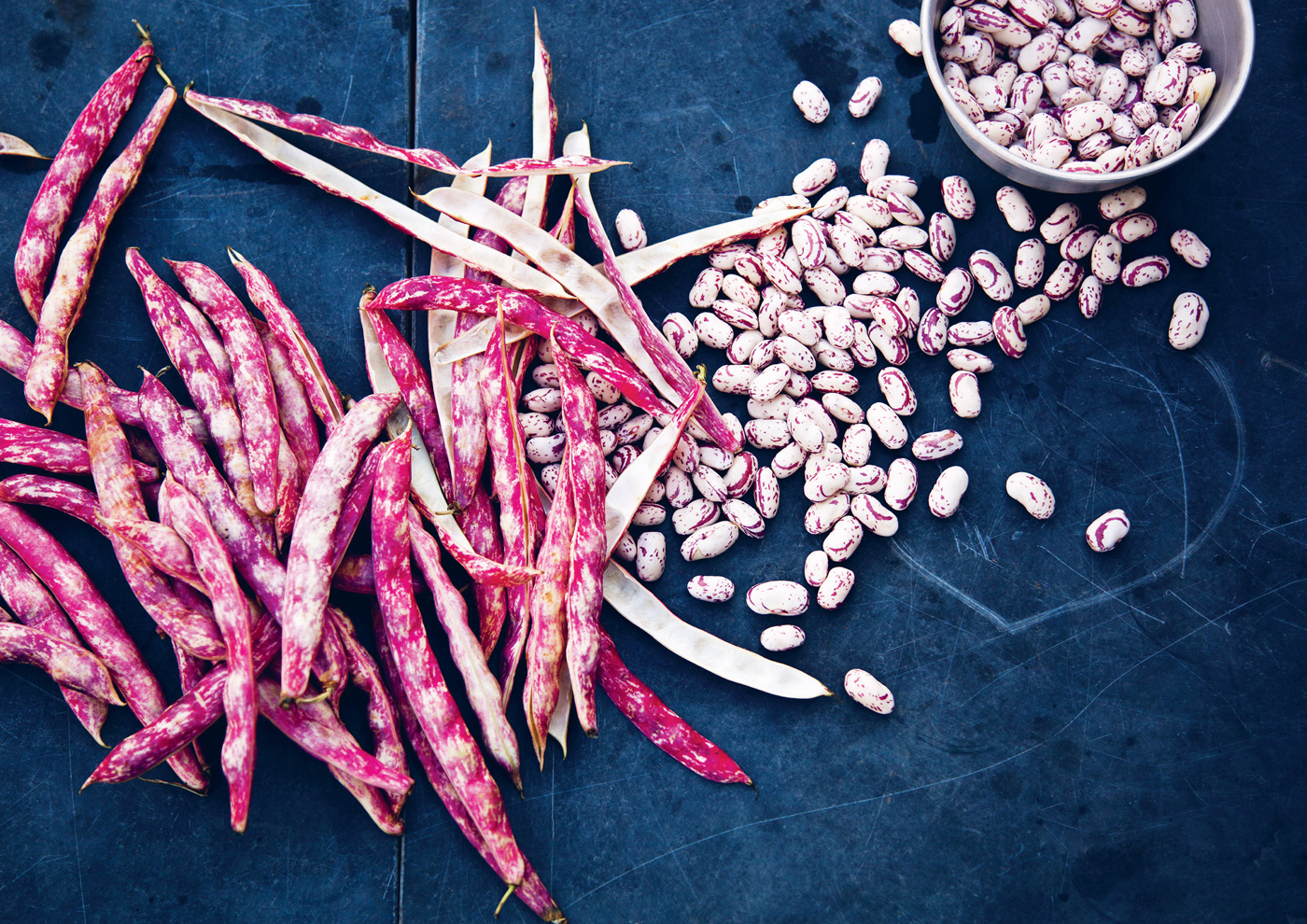
AUTUMN
The gradual coolness that autumn brings with its sharp, bright strands of clear, low-slung sunlight and deep angles of intense brightness that break through the shade of branches as they lose their leaves is a sign that summer is well and truly over. With this change comes a list of exciting new ingredients: the warm, earthy notes of squash, sweet chestnuts and walnuts, the late-ripening wine-speckled pods of borlotti and creamy pale skins of cannellini beans, the last of the tomatoes, sweet red peppers and heavy fat aubergines. Not forgetting fresh porcini, cobnuts, figs, grapes, blackberries, quince, apples and pears as well as celeriac and Jerusalem artichokes, a mass of chicory and radicchio varieties and the last of the beetroot before they are stored over the winter.
Early autumn can extend a long summers growing season, particularly in this country when the summer can be so unreliable, the late heat ripening the fruits of tomatoes and figs, for instance, which overlap with the arrival of the game season. I am mad for game birds and love eating a partridge or teal roasted with some late-summer fruit or adding a few porcini or the last of the fresh borlotti at the beginning of the season and then as it progresses and the days get colder and shorter I move away from the pods and fruit to slowly roasting the deep and rich autumnal flavours of squash or celeriac which have been harvested before the ground frosts and winter closes in.
I made a delicious supper the other day (around the middle of October) when I found I had only a few potatoes left, a couple of carrots, a pepper and two tomatoes ripening in a bowl. There wasnt enough of each ingredient to cook them separately so I blanched the potatoes until just tender then cut the carrots in half, quartered the pepper, added the potatoes and the tomatoes, also cut in half, some thyme and roasted them all in the oven with a little oil. Nothing could be simpler I loved the autumnal colours, the reds and oranges and the feeling that I was eating the end of one season as it folded into the next.
TEAL, THYME, TOMATOES, ONION SQUASH AND FENNEL
Small birds when they come into season are delicious. I cook them a lot in the autumn and winter months. They are very handy when Charles is working and I am at home and cooking supper for myself.
Teal, the smallest of ducks, migrate in the winter months in search of food. The little birds fly in large, playful flocks, eating from the marshes any seed heads that remain after the summer growth. One tasty bird is deeply satisfying all the flavour is in the flesh and, being so small, they are quick to cook. Preparation is simply a matter of seasoning, while a few sprigs of thyme tucked inside the birds cavity will add a little fragrance to the meat and juices. Their flesh is slightly gamey but delicate and tender and incredibly delicious.
I dont brown the teal first before roasting, as the skin is fragile and quite thin. It holds a delicate measure of the birds flavour and I dont want to ruin it with an aggressive browning heat. A small sprig of fresh thyme or just a seasoning of salt and pepper is all the bird needs before entering the hot oven about 220C (200C fan) Gas 7 for 1015 minutes. Then take the bird out, cover with some silver foil and let it rest on a warm plate. Add a glassful of red wine to the dish the teal was cooked in and let it reduce over a high heat for about 5 minutes. Put the teal on a plate and pour the juices over.
Peeled and roasted whole tomatoes are very good with teal, the acidity from the tomatoes cutting through the slightly livery flavour of the birds flesh. Some boiled waxy potatoes are good to absorb the juices. This is an easy recipe for one person or you can roast several birds and pile them on a plate in the middle of the table and let your family or guests help themselves.
Quail are more easily available than teal, as they are farmed, and can be found in shops all year round. Cook them in the same way as teal for 1520 minutes. The children prefer them, as they are less gamey and the perfect miniature size. There is something about eating a whole bird pulling the legs off with your fingers, tearing the wishbone away from the carcass, the differences between the tiny mouthfuls of breast and the sweet juiciness from sucking on the tiny wings, the bird tastes so much better when eaten with your fingers.
FOR 4
5g fennel seeds
2 garlic cloves, peeled
extra-virgin olive oil
onion squash, washed, seeds scooped out, cut into segments (like a melon), the widest bulging middle part no more than 3cm thick
a couple of dried chillies, crushed (optional)
1 large bulb of Florence fennel, base and feathery fronds trimmed off, then cut lengthways equally into eighths
200g medium-sized ripe tomatoes
1 handful of fresh garden thyme, washed and dried
4 teal
125ml red wine

